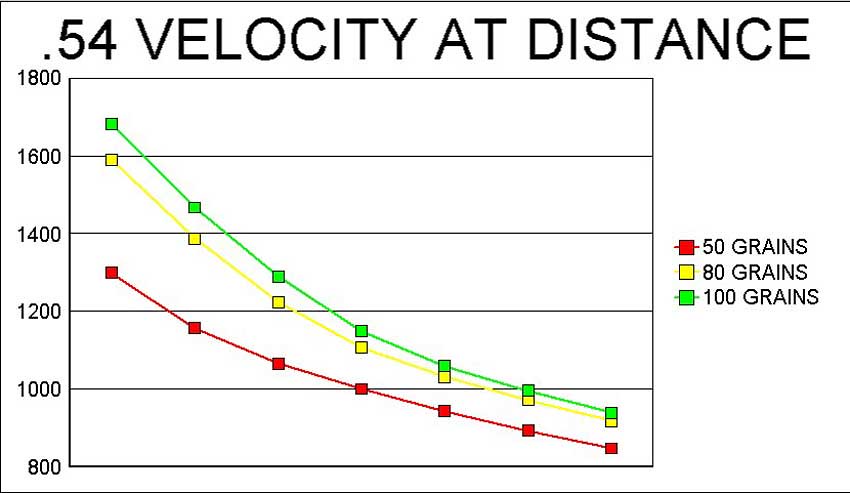This from: http://www.namlhunt.com/traditionalmldata2.html
Dixie Gun Works .54 Caliber "Harper's Ferry" Flintlock Rifle...
Picture
Barrel Length: 35 1/2"
Land-to-Land: .540"
Groove-to-Groove: .552"
Rate of Twist: 1 turn-in-66"
Ignition: Flintlock
Ball Diameter: .530" (Cast)
Ball Weight: 224 grains
Patch: .015" Lubed Cotton
FFg Black Powder - GOEX
Load Muzzle Velocity/Muzzle Energy.. 50-Yard Velocity/Energy.. 100-Yard Velocity/Energy
60 gr. 1,314 f.p.s./858 f.p.e. 1,017 f.p.s./515 f.p.e. 838 f.p.s./347 f.p.e.
70 gr. 1,421 f.p.s./1,001 f.p.e. 1,109 f.p.s./610 f.p.e. 943 f.p.s./442 f.p.e.
80 gr. 1,519 f.p.s./1,147 f.p.e. 1,143 f.p.s./649 f.p.e. 977 f.p.s./473 f.p.e.
90 gr. 1,586 f.p.s./1,252 f.p.e. 1,188 f.p.s./701 f.p.e. 984 f.p.s./491 f.p.e.
100 gr. 1,648 f.p.s./1,351 f.p.e. 1,239 f.p.s./760 f.p.e. 997 f.p.s./496 f.p.e.
The Model 1803 Harper's Ferry was the very first official U.S. Military issue rifle, and was the official rifle of the Lewis & Clark Expedition. North American Muzzleloader Hunting has read where the "official" service charge for this rifle was the light 60-grain charge of FFg black power detailed above. At the muzzle, the load barely generates enough game-taking energy to insure a clean kill on whitetails, pronghorn, mule deer and other similar sized game. At just 50 yards, the retained energy is nearly 300 foot-pounds below what today's hunters acknowledge as the required minimum energy level for such game. If this is the load used by the "Corps of Discovery", it is easy to better understand how the expedition nearly starved at many points along their journey...and epecially why they had so much trouble putting down grizzlies. - Toby Bridges, North America Muzzleloader Hunting
I'm not disagreeing that the 60gr load is considered "to light" for whitetail deer. OTOH from my 50 cal flintlock my load is 100gr. FF. I don't find this load "excessive" but I do know it takes whitetail with regularity.






